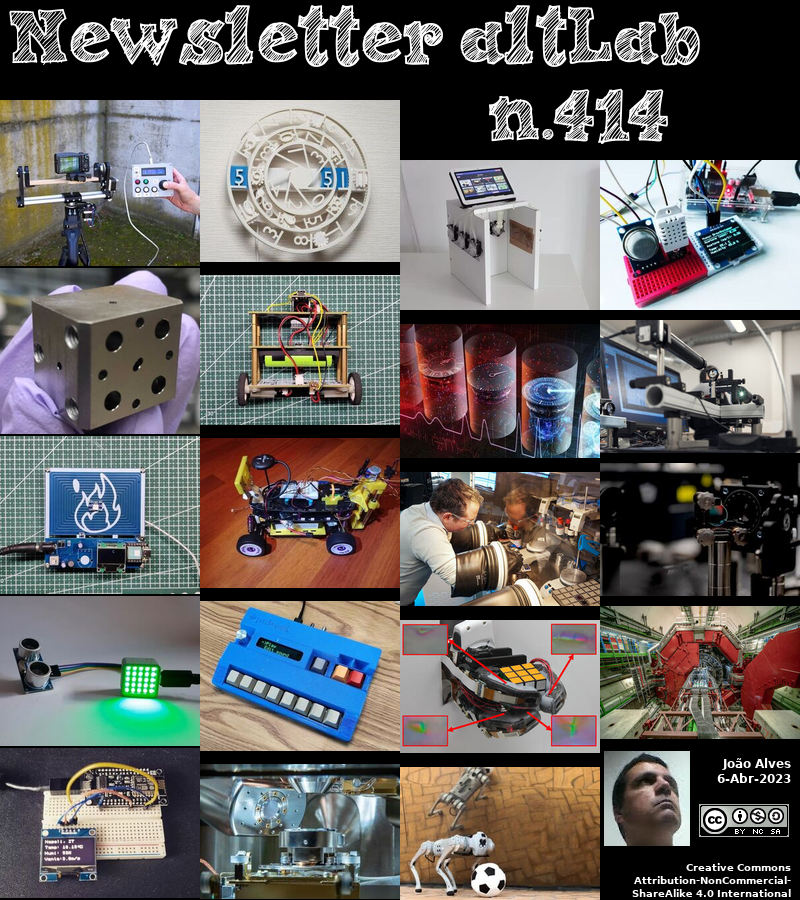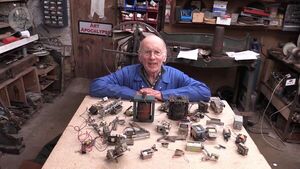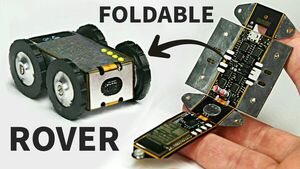2023-04-06 - Nº 414
Editorial
Esta é a Newsletter Nº 414 que se apresenta com o mesmo formato que as anteriores. Se gostar da Newsletter partilhe-a!
Todas as Newsletters encontram-se indexadas no link.
Esta Newsletter tem os seguintes tópicos:
Faz hoje anos que nascia, em 1801, o mineralogista galês William Hallowes Miller. Ele é conhecido pelos seus índices Millerian construídos sobre o seu sistema de eixos de referência para cristais pelo qual os diferentes sistemas de formas de cristais podem ser designados usando um conjunto de três números inteiros para cada face de cristal. Quando publicou este esquema em A Treatise on Crystallography (1839), ele forneceu uma alternativa à confusão existente devido aos muitos sistemas descritivos diferentes anteriormente em uso. No início da sua carreira, publicou livros de texto de sucesso para hidrostática e hidrodinâmica (1831) e cálculo diferencial (1833). Miller também preparou novas normas em 1843 para substituir as Normas Nacionais de peso e comprimento que se tinham perdido no incêndio de 1834 que destruiu os edifícios do Parlamento.
Faz também hoje anos que nascia, em 1890, o astrónomo francês André-Louis Danjon. Ele concebeu uma escala agora padrão de cinco pontos para classificar a escuridão e a cor de um eclipse lunar total, que é conhecida como a Escala de Luminosidade de Danjon. Estudou a rotação da Terra, e desenvolveu instrumentos astronómicos, incluindo um fotómetro para medir o brilho da Terra - o brilho de uma lua escura devido à luz reflectida da Terra. Consistia num telescópio em que um prisma dividia a imagem da Lua em duas imagens idênticas lado a lado. Ajustando um diafragma para escurecer uma das imagens até que a porção iluminada pelo sol tivesse o mesmo brilho aparente que a porção iluminada pela terra na imagem não ajustada, ele podia quantificar o ajuste do diafragma, e assim ter uma medida real do brilho da luz da Terra.
Faz igualmente hoje anos que nascia, em 1890, o aviador e pioneiro da aviação holandês-americano Anthony Fokker. Ele tendo visto um avião voar aos 16 anos de idade, foi inspirado a construir o seu primeiro avião aos 20 anos de idade. Este era um monoplano escorado, o Spider que ele colocou montado num hangar Zeppelin vazio em Baden-Baden, e que o pilotava ganhando a sua licença de piloto. A sua primeira fábrica construiu muitos dos aviões de perseguição da Primeira Guerra Mundial da Alemanha, e ganhou reconhecimento, mas no final da guerra foi posto fora de serviço pelo tratado de Versalhes. A 21 de Julho de 1919, criou uma empresa para aviões civis, na Holanda e subsequentemente começou a fabricar nos EUA. Continuou a influenciar as técnicas de construção de aviões, e adoptou a construção de tubos de aço soldado para fuselagem.
Faz também hoje anos que nascia, em 1892, o pioneiro da aviação americano Donald Douglas. Formou-se no Massachusetts Institute of Technology como o seu primeiro estudante de aeronáutica (1914), depois consultou e desenhou para outros até fundar a sua própria empresa (1920). Ao longo dos anos, a sua empresa estabeleceu o padrão da indústria em termos de fiabilidade e segurança. A série DC de aviões comerciais de passageiros, começando pelo DC-1 (que entrou em serviço em 1933) levou ao DC-8, o primeiro avião comercial a jacto em 1958. Para além dos aviões militares, a empresa produziu também mísseis militares e naves espaciais. O negócio fundiu-se com a McDonnell Aircraft Company em 1967, e após a sua morte, com a Boeing em 1997.
Faz igualmente hoje anos que nascia, em 1903, o engenheiro americano Harold E. Edgerton. Ele utilizou uma luz estroboscópica nos seus estudos, que, em 1931, aplicou o estroboscópio à fotografia de ultra-alta velocidade. Formou uma empresa (1947) para se especializar em tecnologia electrónica, o que levou a inventar a máquina fotográfica Rapatronic, capaz de fotografar explosões de testes de bombas nucleares dos EUA a uma distância de 7 milhas. Ao longo da sua carreira, aplicou a fotografia de alta velocidade como ferramenta em várias aplicações científicas. Também desenvolveu o sonar para estudar o fundo do oceano. Usando sonar side-scan, em 1973, ajudou a localizar o navio de guerra civil afundado USS Monitor, perdido desde 1862, ao largo de Cape Hatteras, NC.
Faz também hoje anos que nascia, em 1913, o inventor, engenheiro, e biofísico americano Otto Schmitt. Ele ficou conhecido pelas suas contribuições científicas para a biofísica e pelo estabelecimento do campo da engenharia biomédica. Schmitt também cunhou o termo biomimética e inventou ou co-inventou o Schmitt-Trigger, o amplificador diferencial, e o amplificador estabilizado por talhador.
Faz igualmente hoje anos que nascia, em 1920, o inventor e engenheiro aeroespacial americano Jack Cover. Ele inventou a arma de atordoamento Taser a partir de uma inspiração após a leitura de um homem brevemente imobilizado por uma cerca eléctrica. Ele trabalhou na sua garagem e no final dos anos 60 tinha criado um dispositivo semelhante a uma lanterna que usava pólvora para disparar dardos capazes de provocar um choque eléctrico a um alvo num raio de 15 pés. Deu-lhe o nome com a sigla Taser das iniciais das palavras em Thomas A. Swift Electric Rifle adaptadas de um livro de ficção científica favorito da sua infância, Tom Swift and His Electric Rifle. Fundou a empresa Taser Systems Inc. em 1970. Foi classificada como arma de fogo devido ao seu uso de pólvora, mas um desenho revisto, oferecido à Cover em 1993 por Rick e Tom Smith, que utilizavam gás comprimido para projectar o dardo removendo essa restrição. O Departamento de Polícia de Los Angeles foi um dos primeiros a adoptar em 1980.
Faz também hoje anos que nascia, em 1928, o bioquímico e geneticista americano James Watson. Ele partilhou o Prémio Nobel da Fisiologia ou Medicina de 1962 (com Francis Crick e Maurice Wilkins) pela descoberta "da estrutura molecular dos ácidos nucleicos e o seu significado para a transferência de informação em material vivo". O ácido desoxirribonucleico (ADN) é a substância contida nas células que controla a hereditariedade. Crick e Watson iniciaram a sua colaboração em 1951, e publicaram o seu artigo sobre a estrutura da dupla hélice em 2 de Abril de 1953 na Nature. Esta realização tornou-se uma pedra angular da genética e foi amplamente considerada como uma das descobertas mais importantes da biologia do século XX.
Por fim, faz hoje anos que nascia, em 1949, o físico germano-americano Horst Störmer. Ele partilhou (com Daniel C. Tsui e Robert B. Laughlin) o Prémio Nobel da Física de 1998 pela descoberta "de uma nova forma de fluido quântico com excitações de carga fraccionada". Ao experimentar utilizar campos magnéticos extremamente poderosos e baixas temperaturas, em 1982, Störmer e Tsui descobriram que os electrões actuando em conjunto em campos magnéticos fortes podem formar novos tipos de "partículas", com cargas que são fracções de cargas de electrões. No espaço de um ano, Laughlin fez uma análise teórica, explicando o seu resultado".
Em 1938, o investigador da Du Pont Roy J. Plunkett e o seu técnico Jack Rebok descobriram acidentalmente o composto químico politetrafluoroetileno (PTFE), mais tarde comercializado como Teflon. Plunkett estava a investigar as reacções químicas do perfluoroetileno gasoso, a fim de sintetizar novos tipos de gases refrigerantes. A Rebok encontrou um cilindro aparentemente defeituoso deste gás, uma vez que não foi encontrada qualquer pressão quando a válvula foi aberta, apesar de o peso do cilindro ser o mesmo que o dos cilindros cheios. Rebok sugeriu serrar o mesmo para o abrir para investigar. No interior estava um pó branco escorregadio. Plunkett descobriu que tinha propriedades invulgares, um maravilhoso lubrificante sólido em forma de pó, era quimicamente inerte e tinha um ponto de fusão muito elevado. Percebeu que era formado por uma polimerização inesperada. Foi patenteado em 4 de Fevereiro de 1941.
Na Newsletter desta semana apresentamos diversas noticias, artigos científicos, projetos de maker e alguns vídeos interessantes.
 João Alves ([email protected])
João Alves ([email protected])
O conteúdo da Newsletter encontra-se sob a licença  Creative Commons Attribution-NonCommercial-ShareAlike 4.0 International License.
Creative Commons Attribution-NonCommercial-ShareAlike 4.0 International License.
Novidades da Semana
Outras Notícias
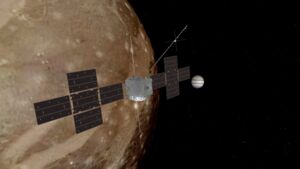
Global Space News: Juice Is Preparing To Launch!
"On April 13 2023, the Jupiter Icy Moons Explorer (JUICE) mission is scheduled to launch from the European Spaceport in Kourou, French Guiana. The ESA-led mission is packed with eleven science instruments for exploring the Jovian ice-covered moons, four of which have been partially developed here in Japan, and Japanese researchers are part of the science teams on a further two instruments. Jupiter has three icy moons, Europa, Ganymede and Callisto, whose surfaces appear to consist of a solid ice shell with a suspected deep liquid water ocean beneath. The presence of water makes the moons intriguing prospects for a possible habitable environment, albeit one extremely different from Earth. JUICE will examine the three moons themselves and the environment surrounding Jupiter to understand conditions that exist both in the moons’ surface and within their watery interior. A particular focus for JUICE is the middle of the three icy satellites, Ganymede." [...]

NASA Study Helps Explain Limit-Breaking Ultra-Luminous X-Ray Sources
"These objects are more than 100 times brighter than they should be. Observations by the agency’s NuSTAR X-ray telescope support a possible solution to this puzzle. Exotic cosmic objects known as ultra-luminous X-ray sources produce about 10 million times more energy than the Sun. They’re so radiant, in fact, that they appear to surpass a physical boundary called the Eddington limit, which puts a cap on how bright an object can be based on its mass. Ultra-luminous X-ray sources (ULXs, for short) regularly exceed this limit by 100 to 500 times, leaving scientists puzzled. In a recent study published in The Astrophysical Journal, researchers report a first-of-its-kind measurement of a ULX taken with NASA’s Nuclear Spectroscopic Telescope Array (NuSTAR)." [...]

Energy harvesting PMIC from Nexperia enables environmentally friendly energy-autonomous low-power devices
"Nexperia, the expert in essential semiconductors, today announced an expansion to its range of Power ICs with Energy Harvesting solutions to simplify and enhance the performance of low-power internet of things (IoT) and other embedded applications. The NEH2000BY is a high-performance power management integrated circuit (PMIC) which recharges a battery or storage capacitor using energy harvested from ambient sources, such as light (which can be harvested using a photovoltaic cell). As a result, Nexperia’s NEH2000BY will enable the development of electronic devices that are self-powered, smaller, and environmentally friendly. Furthermore, this energy harvesting solution can help mitigate the environmental impact of the billions of batteries produced and discarded each year. Nexperia’s NEH2000BY PMIC makes it much easier to design energy harvesting solutions which can be up to 20x smaller than other competing offerings and do not require manual optimization for individual applications. In addition, the PMIC was designed without inductors, simplifying PCB design, and significantly reducing overall BOM and board size, with a 12 mm² assembly area." [...]

Kioxia and Western Digital Announce Newest 3D Flash Memory
"Demonstrating continued innovation, Kioxia Corporation and Western Digital Corp. (NASDAQ: WDC) today announced details of their newest 3D flash memory technology. Applying advanced scaling and wafer bonding technologies, the 3D flash memory delivers exceptional capacity, performance and reliability at a compelling cost, which makes it ideal for meeting the needs of exponential data growth across a broad range of market segments. “The new 3D flash memory demonstrates the benefits of our strong partnership with Kioxia and our combined innovation leadership,” said Alper Ilkbahar, Senior Vice President of Technology & Strategy at Western Digital. “By working with one common R&D roadmap and continued investment in R&D, we have been able to productize this fundamental technology ahead of schedule and deliver high-performance, capital-efficient solutions.” Kioxia and Western Digital reduced the cost by introducing several unique processes and architectures, enabling continued lateral scaling advancements. This balance between vertical and lateral scaling produces greater capacity in a smaller die with fewer layers at an optimized cost. The companies also developed groundbreaking CBA (CMOS directly Bonded to Array) technology, wherein each CMOS wafer and cell array wafer are manufactured separately in its optimized condition and then bonded together to deliver enhanced bit density and fast NAND I/O speed." [...]

Renesas Cellular-to-Cloud Development Kits Now Connect Seamlessly to Microsoft Azure Cloud Services
"Azure-Certified Kits Featuring both RA and RX Families of 32-bit MCUs Enable Reliable and Secure End-to-End Cloud Solutions Renesas Electronics Corporation (TSE:6723), a premier supplier of advanced semiconductor solutions, today announced that its cellular-to-cloud development kits powered by Renesas’ 32-bit microcontrollers (MCUs) now fully support Microsoft’s popular Azure cloud services. The two Cloud Kits – the CK-RA6M5 and CK-RX65N – enable users to readily connect and manage wireless IoT devices via the cloud. With these latest updates, IoT device developers can now take advantage of unique features and services available through Azure, an open and flexible cloud computing platform used by billions of devices worldwide. Both cloud development kits incorporate Renesas’ LTE CAT-M1 module, which wirelessly connects MCUs to cloud services without a gateway. The kits are equipped with Microsoft’s new Embedded Wireless Framework, providing a simplified link to the Azure cloud platform. The Embedded Wireless Framework lets any network adapter securely connect to the cloud, providing greater flexibility and better lifecycle management of cloud-based products." [...]

AMD Launches First 5nm ASIC-based Media Accelerator Card to Power New Era of Interactive Media Services at Scale
"AMD (NASDAQ: AMD) today announced the AMD Alveo™ MA35D media accelerator featuring two 5nm, ASIC-based video processing units (VPUs) supporting the AV1 compression standard and purpose-built to power a new era of live interactive streaming services at scale. With over 70% of the global video market being dominated by live content1, a new class of low-latency, high-volume interactive streaming applications are emerging such as watch parties, live shopping, online auctions, and social streaming. The Alveo MA35D media accelerator delivers the high channel density, with up to 32x 1080p60 streams per card, power efficiency and ultra-low-latency performance critical to reducing the skyrocketing infrastructure costs now required for scaling such compute intensive content delivery. Compared to the previous generation Alveo U30 media accelerator, the Alveo MA35D delivers up to 4x higher channel density2, 4x max lower latency in 4K3 and 1.8x greater compression efficiency4 to achieve the same VMAF score – a common video quality metric. “We worked closely with our customers and partners to understand not just their technical requirements, but their infrastructure challenges in deploying high-volume, interactive streaming services profitably,” said Dan Gibbons, general manager of AECG Data Center Group, AMD. “We developed the Alveo MA35D with an ASIC architecture tailored to meet the bespoke needs of these providers to reduce both capital and operating expenses for delivering immersive experiences to their users and content creators at scale.” Purpose-Built Video Processing Unit The Alveo MA35D utilizes a purpose-built VPU to accelerate the entire video pipeline." [...]

Renesas Is First to Support Public Building Air Quality Standards in Environmental Sensors
"Renesas Electronics Corporation (TSE: 6723), a premier supplier of advanced semiconductor solutions, today announced new firmware for its industry-leading ZMOD digital air quality sensors. The latest firmware lets engineers configure the sensors to support various green air quality standards for Commercial & Public Buildings, making them the first sensors in the industry to conform to the requirements of multiple global air quality standards. As commercial HVAC systems move towards autonomous monitoring of our air quality, these systems can now monitor and detect harmful gasses in indoor spaces. Support for environmental standards increases the value of end products and reduces the effort needed to qualify manufacturers for government incentives. Renesas offers support for the Commercial & Public Building standards, as well as other environmental standards, through its ZMOD digital gas sensors. Both the ZMOD4410 indoor air quality sensor and the ZMOD4510 outdoor air quality sensor offer compliance with the standards." [...]

Virgin Orbit fails to secure funding, will cease operations and lay off nearly entire workforce
"Virgin Orbit is ceasing operations “for the foreseeable future” after failing to secure a funding lifeline, CEO Dan Hart told employees during an all-hands meeting Thursday afternoon. The company will lay off nearly all of its workforce. “Unfortunately, we’ve not been able to secure the funding to provide a clear path for this company,” Hart said, according to audio of the 5 p.m. ET meeting obtained by CNBC. “We have no choice but to implement immediate, dramatic and extremely painful changes,” Hart said, audibly choking up on the call. He added this would be “probably the hardest all-hands that we’ve ever done in my life.” The company will eliminate all but 100 positions, amounting to about 90% of the workforce, Hart said, noting the layoffs will affect every team and department." [...]

Google says its AI supercomputer is faster, greener than Nvidia A100 chip
"Alphabet Inc's (GOOGL.O) Google released on Tuesday new details about the supercomputers it uses to train its artificial intelligence models, saying the systems are both faster and more power-efficient than comparable systems from Nvidia Corp (NVDA.O). Google has designed its own custom chip called the Tensor Processing Unit, or TPU. It uses those chips for more than 90% of the company's work on artificial intelligence training, the process of feeding data through models to make them useful at tasks such as responding to queries with human-like text or generating images. The Google TPU is now in its fourth generation. Google on Tuesday published a scientific paper detailing how it has strung more than 4,000 of the chips together into a supercomputer using its own custom-developed optical switches to help connect individual machines. Improving these connections has become a key point of competition among companies that build AI supercomputers because so-called large language models that power technologies like Google's Bard or OpenAI's ChatGPT have exploded in size, meaning they are far too large to store on a single chip." [...]
Ciência e Tecnologia

Fast light pulse triggers charge transfer into water
"Using a new technique, researchers were able to observe live what happens in the first picosecond when a proton detaches from a dye after exposure to light. In certain molecules, the so-called photoacids, a proton can be released locally by excitation with light. There is a sudden change in the pH value in the solution – a kind of fast switch that is important for many chemical and biological processes. Until now, however, it was still unclear what happens at the moment of proton release. This is exactly what researchers in the Cluster of Excellence Ruhr Explores Solvation RESOLV at Ruhr University Bochum, Germany, have now been able to observe in an experiment using new technology. They observed a beating between solute and solvent initiating a tiny quake, lasting only three to five picoseconds, before the proton starts to detach." [...]

A new type of photonic time crystal gives light a boost
"The researchers created photonic time crystals that operate at microwave frequencies, and they showed that the crystals can amplify electromagnetic waves. Researchers have developed a way to create photonic time crystals and shown that these bizarre, artificial materials amplify the light that shines on them. These findings could lead to more efficient and robust wireless communications and significantly improved lasers. Time crystals were first conceived by Nobel laureate Frank Wilczek in 2012. While conventional natural crystals have a structural pattern that repeats in space, in a time crystal, the pattern repeats in time instead. Although some physicists were initially skeptical that time crystals could exist, recent experiments have succeeded in creating them." [...]

ALICE sees “the ridge” in simplest collisions yet
"The observation brings physicists a step closer to finding the origin of collective phenomena in small collision systems. When atomic nuclei such as gold or lead nuclei collide at high energy in particle colliders, they can produce quark–gluon plasma (QGP) – a hot and dense state of matter predicted to have existed shortly after the Big Bang. One of the key features of QGP formation in such heavy-ion collisions is a long-range spatial correspondence, or correlation, between the particles that are created in the collisions. This collective phenomenon, which manifests as a ridge-like shape in data plots and is known as the ridge, was first observed in 2005 in heavy-ion collisions at the Relativistic Heavy-Ion Collider at Brookhaven National Laboratory in the US, and has since been observed at CERN’s Large Hadron Collider (LHC) in smaller collision systems such as collisions between protons. At the Rencontres de Moriond conference today, the ALICE collaboration reported the observation of a ridge correlation in the simplest collision system yet. The result brings physicists a step closer to finding the origin of QGP-like collective phenomena in small collision systems." [...]

New imaging technology identifies material defects and composition in unprecedented detail
"The detector provides ultra-sensitive elemental and chemical composition analysis. A team of researchers at Los Alamos National Laboratory has developed a new Hyperspectral X-ray Imaging (HXI) detector that provides ultra-sensitive elemental and chemical composition analysis for a variety of materials. “HXI represents a generational leap forward in energy resolution and efficiency for material analysis in scanning electron microscopes,” said Matt Carpenter of Los Alamos’ Safeguards Science and Technology group. “This allows researchers to measure detailed composition at the nanoscale in ways never before possible.” Material composition microanalysis using X-ray spectroscopy in scanning electron microscopes (SEMs) is common practice in many fields, including the semiconductor fabrication industry, geology, environmental science, forensics and materials engineering. However, standard commercial detectors that measure X-ray spectra require users to choose between high-energy resolution or high detection efficiency. As a result, detailed chemical and elemental composition mapping of material at the nanoscale level has never before been possible — until now." [...]
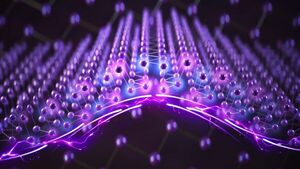
Novel ferroelectric material for the future of data storage solutions
"Since its discovery more than 100 years ago, ferroelectric materials still garner much attention in research due to their wide-ranging applications, from data storage to renewable energy systems. Ferroelectric materials can generate an electric field and offer several benefits, such as high writing speed for data storage, high storage density, lower operating power, and the ability to retain data without a power source. Two-dimensional (2D) ferroelectric materials are an emerging type of ferroelectric material. However, research and development in this area is limited due to the small number of available materials. Adding to the current library of 2D ferroelectric materials, physicists from NUS have recently discovered a new single-element material, known as 2D black phosphorus-like bismuth (BP-Bi), that demonstrates ferroelectric properties. This new material changes the conventional understanding of ferroelectric materials, which are commonly made up of compounds – more than one element – with opposing charges to allow the formation of an electric field." [...]
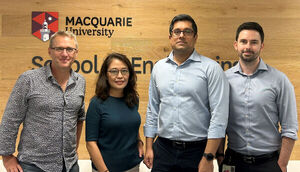
New technology advances solar-cell production
"A microwave technology invented at Macquarie University will improve the manufacture of solar cells and make them easier to recycle. During the fabrication of solar panels, silicon goes through several high-temperature processes known as annealing. Currently the cells are cooked in an oven. But in a paper published in the US Journal Applied Physics Letters this week, a team led by senior lecturer Dr Binesh Puthen Veettil of the School of Engineering has shown that heating using microwave radiation is nearly as efficient. Plus, it saves considerable time and energy and has other advantages. Because microwave radiation selectively heats silicon, it leads to almost instantaneous effects with massive savings of energy." [...]
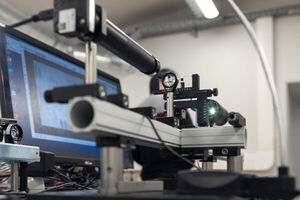
New Discovery Makes Cheap, Compact Lasers Possible
"Researchers from ITMO have demonstrated a novel technique for generation of laser radiation that utilizes perovskite metasurfaces. The solution will pave the way for next-gen lasers that are less than 100 nm thick and require significantly less energy. The invention can be incorporated into compact photonic chips for light control or used as an intense light source in medicine (e.g., for tissue or blood diagnostics), materials processing, astronomy, and other fields. The results of this study were published in the journal Advanced Functional Materials. The global photonics community is directing its efforts towards developing advanced lasers that are both low-threshold and cost-efficient. As most lasers consist of a pump source, an active medium, and a resonator, specialists have to pump the active medium with energy to establish a population inversion – a state in which the number of excited electrons and holes (positively charged particles) is greater than of those in a normal, unexcited state." [...]

Simulating a secure future
"Imagine a movie about a rogue employee who breaches security in a company that implants chips inside half of the world’s computers. They embed a Trojan in systems around the globe and hold the world to ransom. This is not unimaginable, says Rajat Kumar, a Ph.D. student in Yehia Massoud’s lab at KAUST. “A single company currently supplies more than half of the world’s chips, and nearly all of the most advanced chips,” he confirms. Massoud’s group researches emerging technology that could make chips more secure. A recent project reports multifunctional logic gates that offer users a range of hardware security advantages." [...]

A four-legged robotic system for playing soccer on various terrains
"“DribbleBot” can maneuver a soccer ball on landscapes such as sand, gravel, mud, and snow, using reinforcement learning to adapt to varying ball dynamics. If you've ever played soccer with a robot, it's a familiar feeling. Sun glistens down on your face as the smell of grass permeates the air. You look around. A four-legged robot is hustling toward you, dribbling with determination. While the bot doesn’t display a Lionel Messi-like level of ability, it's an impressive in-the-wild dribbling system nonetheless." [...]

Creating a Mixed Magnon State in an Organic Hybrid Perovskite Material by DMI
"By making use of the Dzyaloshinskii–Moriya-Interaction (DMI), an international research group has made a mixed magnon state in an organic hybrid perovskite material. The consequent material exhibits the potential for processing and storing quantum computing information. Also, the work expands various potential materials that could be utilized to make hybrid magnonic systems. As far as magnetic materials are concerned, quasi-particles known as magnons direct the electron spin present inside the material. There are two kinds of magnons—optical and acoustic—that pertain to the direction of their spin. Dali Sun is also a member of the Organic and Carbon Electronics Lab." [...]

Click Away the Bias: New System to Make AI Training Easier and More Accurate
"Scientists devise a simple one-click system that can remove the biases commonly found in AI training datasets Deep neural networks (DNNs) that enable AI are often trained on datasets, but this can create problems as many datasets have co-occurrence biases. This makes the AI less capable of accurately identifying features. To solve this problem, researchers from Japan and China have created a novel human-in-the-loop system which uses a single-click attention annotating system. This system makes the DNN more accurate, while using less training data and being more time and cost efficient. In the past few years, "AI" has become a major buzzword in technology. The prospect of a computer being able to do tasks which only a human could perform is a captivating thought indeed!" [...]
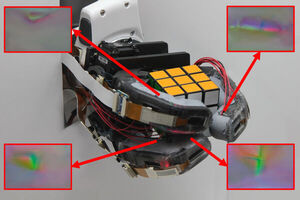
Robotic hand can identify objects with just one grasp
"The three-fingered robotic gripper can “feel” with great sensitivity along the full length of each finger – not just at the tips. Inspired by the human finger, MIT researchers have developed a robotic hand that uses high-resolution touch sensing to accurately identify an object after grasping it just one time. Many robotic hands pack all their powerful sensors into the fingertips, so an object must be in full contact with those fingertips to be identified, which can take multiple grasps. Other designs use lower-resolution sensors spread along the entire finger, but these don’t capture as much detail, so multiple regrasps are often required. Instead, the MIT team built a robotic finger with a rigid skeleton encased in a soft outer layer that has multiple high-resolution sensors incorporated under its transparent “skin.” The sensors, which use a camera and LEDs to gather visual information about an object’s shape, provide continuous sensing along the finger’s entire length. Each finger captures rich data on many parts of an object simultaneously." [...]
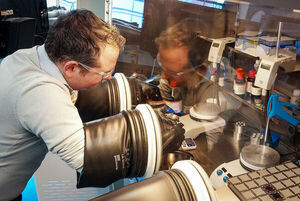
Highly sensitive measurement technique leads to better solar cell
"Solar energy is becoming an increasingly popular source of renewable energy. Current solar panels with silicon as their primary component are affordable and reliable. However, the use of a relatively new material, perovskite, could dramatically improve the solar cell’s efficiency. TU/e researcher Bas van Gorkom developed a highly sensitive technique for measuring defects in the crystal structure of perovskite. This is important, since a better quality of crystal can enhance the stability of perovskite. In the dark – pitch dark – and away from vibrations and noise." [...]

Advance in technology paves the way to realistic 3D holograms for virtual reality and more
"Researchers overcome two bottlenecks in current digital holographic techniques Researchers have developed a new way to create dynamic ultrahigh-density 3D holographic projections. By packing more details into a 3D image, this type of hologram could enable realistic representations of the world around us for use in virtual reality and other applications. “A 3D hologram can present real 3D scenes with continuous and fine features,” said Lei Gong, who led a research team from the University of Science and Technology of China. “For virtual reality, our method could be used with headset-based holographic displays to greatly improve the viewing angles, which would enhance the 3D viewing experience. It could also provide better 3D visuals without requiring a headset.” Producing a realistic-looking holographic display of 3D objects requires projecting images with a high pixel resolution onto a large number of successive planes, or layers, that are spaced closely together. This achieves high depth resolution, which is important for providing the depth cues that make the hologram look three dimensional." [...]

Scientists use computational modeling to design “ultrastable” materials
"These highly stable metal-organic frameworks could be useful for applications such as capturing greenhouse gases. Materials known as metal-organic frameworks (MOFs) have a rigid, cage-like structure that lends itself to a variety of applications, from gas storage to drug delivery. By changing the building blocks that go into the materials, or the way they are arranged, researchers can design MOFs suited to different uses. However, not all possible MOF structures are stable enough to be deployed for applications such as catalyzing reactions or storing gases. To help researchers figure out which MOF structures might work best for a given application, MIT researchers have developed a computational approach that allows them to predict which structures will be the most stable. Using their computational model, the researchers have identified about 10,000 possible MOF structures that they classify as “ultrastable,” making them good candidates for applications such as converting methane gas to methanol." [...]

Combining irradiation and lithography to engineer advanced conducting materials
"A large collaboration of researchers led by the University of Wollongong has used nuclear techniques at ANSTO and other methods to develop a process to engineer nanoscale arrays of conducting channels for advanced scalable electronic circuitry. As reported in a paper in Nature Communications, investigators created patterns of topological surface edge states on antimony telluride (Sb2Te3) that made the surface edges conductive while the bulk layer beneath remained an insulator. The prepared material is a 3D topological insulator, a new state of matter with insulating energy gaps in the bulk and gapless conducting edge or surface states. The irradiation displaced atoms causing the transformation of the surface from a crystalline to a disordered glassy state. “Our research shows that, even if transformation may be possible in special cases according to past theory, there is no universal pathway and materials, such as antimony telluride, are instead converted to so-called trivial insulators”. Previous research by scientists at the FLEET Centre established that a topological insulator could function as the ‘on’ state of a transistor with current carried by the conducting edges." [...]

Solid-State Lithium-Sulfur Batteries: Neutrons unveil sluggish charge transport
"The scientists designed a special cell in order to observe the transport of lithium-ions between the anode and the cathode in a solid-state Lithium-Sulfur battery. Since lithium can hardly be detected with x-ray methods, HZB physicists Dr. Robert Bradbury and Dr. Ingo Manke examined the sample cell with neutrons, which are extremely sensitive to lithium. In conjunction with Dr. Nikolay Kardjilov, HZB, they used neutron radiography and neutron tomography methods on the CONRAD2 instrument at the Berlin neutron source BER II1. Groups from Giessen (JLU), Braunschweig (TUBS) and Jülich (FZJ) were also involved in the work. Lithium ions observed directly "We now have much better idea what is limiting the battery performance," says Bradbury: "We see from the operando neutron radiography data that there is a reaction front of lithium ions propagating through the composite cathode confirming the negative influence of a low effective ionic conductivity." Additionally, the 3D neutron tomography images show trapped lithium concentrated near the current collector during recharging." [...]
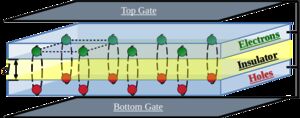
Can a solid be a superfluid? Engineering a novel supersolid state from layered 2D materials
"A collaboration of Australian and European physicists predict that layered electronic 2D semiconductors can host a curious quantum phase of matter called the supersolid. The supersolid is a very counterintuitive phase indeed. It is made up of particles that simultaneously form a rigid crystal and yet at the same time flow without friction since all the particles belong to the same single quantum state. A solid becomes 'super' when its quantum properties match the well-known quantum properties of superconductors. A supersolid simultaneously has two orders, solid and super: - solid because of the spatially repeating pattern of particles, - super because the particles can flow without resistance. "Although a supersolid is rigid, it can flow like a liquid without resistance," explains Lead author Dr Sara Conti (University of Antwerp)." [...]
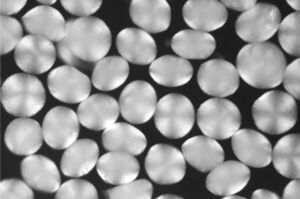
A shot in the arm
"Researchers develop new, patient-friendly hydrogel platform for administering lifesaving biologics. Biologics, a class of therapeutics derived from living organisms, offer enormous advantages to patients battling challenging diseases and disorders. Treatments based on biologics can boost the immune system to stem attacks from infections or target specific pathways to block the formation of tumors. “These drugs, which have been around for just the last 20 years, do magic,” says Amir Erfani, a postdoc in the MIT Department of Chemical Engineering (ChemE). “They can save millions of people around the world.” But the unrivaled effectiveness of biologics comes at a cost. They can be difficult to administer, often demanding time-consuming intravenous (IV) infusions at clinics." [...]
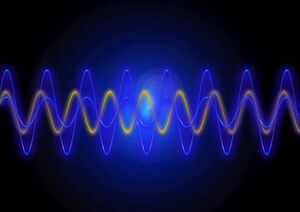
Magnon-based computation could signal computing paradigm shift
"Thanks to a breakthrough in the field of magnonics, EPFL researchers have sent and stored data using charge-free magnetic waves, rather than traditional electron flows. The discovery could solve the dilemma of energy-hungry computing technology in the age of big data. Like electronics or photonics, magnonics is an engineering subfield that aims to advance information technologies when it comes to speed, device architecture, and energy consumption. A magnon corresponds to the specific amount of energy required to change the magnetization of a material via a collective excitation called a spin wave (visualized above). Because they interact with magnetic fields, magnons can be used to encode and transport data without electron flows, which involve energy loss through heating (known as Joule heating) of the conductor used. As Dirk Grundler, head of the Lab of Nanoscale Magnetic Materials and Magnonics (LMGN) in the School of Engineering explains, energy losses are an increasingly serious barrier to electronics as data speeds and storage demands soar." [...]

New atomic-scale understanding of catalysis could unlock massive energy savings
"In an advance they consider a breakthrough in computational chemistry research, University of Wisconsin–Madison chemical engineers have developed a model of how catalytic reactions work at the atomic scale. This understanding could allow engineers and chemists to develop more efficient catalysts and tune industrial processes — potentially with enormous energy savings, given that 90% of the products we encounter in our lives are produced, at least partially, via catalysis. Catalyst materials accelerate chemical reactions without undergoing changes themselves. They are critical for refining petroleum products and for manufacturing pharmaceuticals, plastics, food additives, fertilizers, green fuels, industrial chemicals and much more. Scientists and engineers have spent decades fine-tuning catalytic reactions — yet because it’s currently impossible to directly observe those reactions at the extreme temperatures and pressures often involved in industrial-scale catalysis, they haven’t known exactly what is taking place on the nano and atomic scales. This new research helps unravel that mystery with potentially major ramifications for industry." [...]

Fully Recyclable Printed Electronics Ditch Toxic Chemicals for Water
"Engineers at Duke University have produced the world's first fully recyclable printed electronics that replace the use of chemicals with water in the fabrication process. By bypassing the need for hazardous chemicals, the demonstration points down a path industry could follow to reduce its environmental footprint and human health risks. The research appeared online Feb. 28 in the journal Nano Letters. One of the dominant challenges facing any electronics manufacturer is successfully securing several layers of components on top of each other, which is crucial to making complex devices. Getting these layers to stick together can be a frustrating process, particularly for printed electronics. "If you're making a peanut butter and jelly sandwich, one layer on either slice of bread is easy," explained Aaron Franklin, the Addy Professor of Electrical and Computer Engineering at Duke, who led the study." [...]
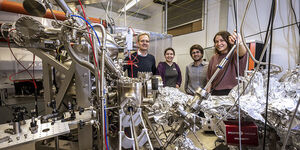
Meta-optics shows physical processes in the attosecond range
"A new type of meta-optics from Harvard has proven its functionality in experiments at Graz University of Technology. With it, it is possible to observe the smallest structures such as nanoparticles or transistors. Developed at Harvard, and successfully tested at Graz University of Technology (TU Graz), a revolutionary new meta-optics for microscopes with extremely high spatial and temporal resolution has proven its functional ability in laboratory tests at the Institute of Experimental Physics at TU Graz. Microscopes using this kind of lens promise completely new research and development approaches, especially in semiconductor and solar cell technology. The research team from Graz and Boston currently reports on the construction and the successful laboratory experiment with this new meta-optics in the specialist journal “Science”. The lens of the microscope has made it possible to use extreme ultraviolet radiation for the first time." [...]

Origami-Inspired Robots Can Sense, Analyze and Act in Challenging Environments
"Roboticists have been using a technique similar to the ancient art of paper folding to develop autonomous machines out of thin, flexible sheets. These lightweight robots are simpler and cheaper to make and more compact for easier storage and transport. However, the rigid computer chips traditionally needed to enable advanced robot capabilities -- sensing, analyzing and responding to the environment -- add extra weight to the thin sheet materials and makes them harder to fold. The semiconductor-based components therefore have to be added after a robot has taken its final shape. Now, a multidisciplinary team led by researchers at the UCLA Samueli School of Engineering has created a new fabrication technique for fully foldable robots that can perform a variety of complex tasks without relying on semiconductors. A study detailing the research findings was published in Nature Communications." [...]

Absolute Zero in the Quantum Computer
"Erasing data perfectly and reaching the lowest possible temperature – those two things seem to be completely different, but they are closely intertwined. At TU Wien, a quantum formulation has now been found for the third law of thermodynamics. The absolute lowest temperature possible is -273.15 degrees Celsius. It is never possible to cool any object exactly to this temperature -- one can only approach absolute zero. This is the third law of thermodynamics. A research team at TU Wien (Vienna) has now investigated the question: How can this law be reconciled with the rules of quantum physics?" [...]
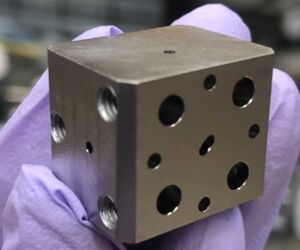
New experiment translates quantum information between technologies in an important step for the quantum internet
"Researchers have discovered a way to “translate” quantum information between different kinds of quantum technologies. Researchers have discovered a way to “translate” quantum information between different kinds of quantum technologies, with significant implications for quantum computing, communication, and networking. The research, published in the journal Nature on Wednesday, was funded by the Army Research Office (ARO), the Air Force Office of Scientific Research (AFOSR), and the NSF Quantum Leap Challenge Institute for Hybrid Quantum Architectures and Networks (HQAN), which is led by the University of Illinois Urbana-Champaign. It represents a new way to convert quantum information from the format used by quantum computers to the format needed for quantum communication. Photons—particles of light—are essential for quantum information technologies, but different technologies use them at different frequencies. For example, some of the most common quantum computing technology is based on superconducting qubits, such as those used by tech giants Google and IBM; these qubits store quantum information in photons that move at microwave frequencies." [...]
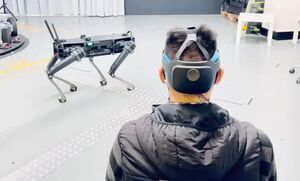
A sensor that might someday enable ‘mind-controlled’ robots
"It sounds like something from science fiction: Don a specialized, electronic headband and control a robot using your mind. But now, recent research published in ACS Applied Nano Materials has taken a step toward making this a reality. By designing a special, 3D-patterned structure that doesn’t rely on sticky conductive gels, the team has created “dry” sensors that can measure the brain’s electrical activity, even amidst hair and the bumps and curves of the head. Physicians monitor electrical signals from the brain with electroencephalography (EEG), in which specialized electrodes are either implanted into or placed on the surface of the head. EEG helps diagnose neurological disorders, but it can also be incorporated into “brain-machine interfaces,” which use brain waves to control an external device, such as a prosthetic limb, robot or even a video game. Most non-invasive versions involve the use of “wet” sensors, which are stuck onto the head with a gloopy gel that can irritate the scalp and sometimes trigger allergic reactions." [...]
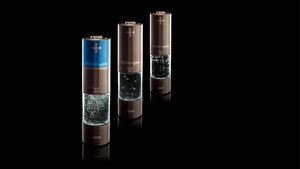
Texas A&M Researchers Find Major Storage Capacity In Water-Based Batteries
"The team discovered a groundbreaking increase in the storage capacity of water-based battery electrodes, an important step in the development of lithium-free batteries. Researchers at Texas A&M University have discovered a 1,000% difference in the storage capacity of metal-free, water-based battery electrodes. These batteries are different from lithium-ion batteries that contain cobalt. The group’s goal of researching metal-free batteries stems from having better control over the domestic supply chain since cobalt and lithium are outsourced. This safer chemistry would also prevent battery fires. Chemical engineering professor Dr. Jodie Lutkenhaus and chemistry assistant professor Dr. Daniel Tabor have published their findings about lithium-free batteries in Nature Materials." [...]
Projetos Maker
Diversos Projetos interessantes.
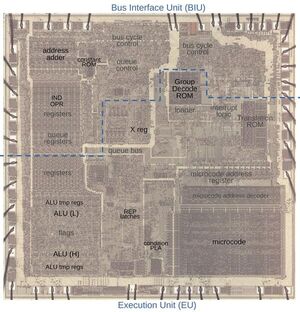
The microcode and hardware in the 8086 processor that perform string operations
"Intel introduced the 8086 microprocessor in 1978. This processor ended up being hugely influential, setting the path for the x86 architecture that is extensively used today. One interesting feature of the 8086 was instructions that can efficiently operate on blocks of memory up to 64K bytes long.1 These instructions rapidly copy, compare, or scan data and are known as "string" instructions.2 In this blog post, I explain string operations in the 8086, analyze the microcode that it used, and discuss the hardware circuitry that helped it out. My analysis is based on reverse-engineering the 8086 from die photos. The photo below shows the chip under a microscope. I've labeled the key functional blocks; the ones that are important to this post are darker." [...]

Digital Crazy Hours and Minutes - WiFi Sync Clock
"Introducing a mechanical digital clock with numbers strangely arranged. Technical highlights - Usually, intermittent motion mechanism such as Geneva drive is necessary to decrease the number of the motors of mechanical digital clock. Contrary, this clock has a constant mesh (permanently engaged reduction gear) between tens and ones places of minute numbers. The ratio of the reduction gear is coprime (7 : 10) and 70 numbers can be shown by one motor. - The order of the numbers are not random but optimized to minimize the time to update. Average angle of rotation of the central rotor is less than 360 degrees." [...]
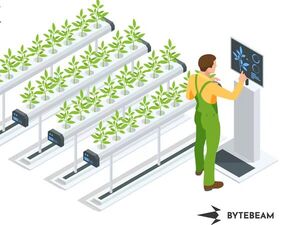
Smart indoor farming using Bytebeam SDK for Arduino
"Temperature, CO2, humidity, and light intensity are all important environmental factors that can affect the growth and productivity of plant. Story Indoor farming is a very often talked about topic nowadays as it critically affects plant growth and productivity of plants. Increasing demands for high-quality produce and limited availability of arable land has forced people to rethink agriculture practices. People are exploring new areas of agriculture like indoor farming, hydroponic and aeroponic. In indoor farming, a farmer needs to maintain an artificial environment for plant growth which has led to advancements in technology in indoor farming. There is some critical parameter that can affect the growth productivity of plants in an indoor farm like temperature, humidity, CO2 and light intensity." [...]

ESP8266/NodeMCU/ESP32 Audio Recorder
"ESP8266 has an ADC input which is a 10 bit analog to digital converter and this pin is the audio signal input for the “ESP8266 Audio Recorder” project. This project is an arduino (c-language) source code, which is a firmware for the ESP8266 module and records the audio data by reading the ADC pin’s value, encodes the data and sends it to the web browser via the firmware’s Web Application. The web browser saves the data and the user can play or download the recorded audio. The audio signal must be between 0-3.3v for ESP32 and NodeMCU modules and must be between 0-1v for directly connecting to the ESP8266 modules. The best compatible audio amplifier is LM386. The “WaveShare Sound Sensor” is using this op-amp and also you can use the suggested schematics in the manual file of the project." [...]

Ultrasonic Distance Sensor Using ATOM Matrix ESP32
"In this Tutorial we are going to explore how to measure a distance using the ATOM Matrix ESP32 and Ultrasonic Range sensor. What You Will Need: - ATOM Matrix ESP32 More info - HC-SR04 Ultrasonic Range Measurement Module - Jumper wires - Visuino program: Download Visuino" [...]
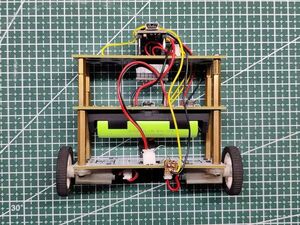
Mini Self-balancing Robot
"Made a simple Self Balancing Robot using XIAO ESP32 C3, Arduino Nano and Custom PCBs So here's an interesting little project: a Mini Self-Balancing Bot made from three layers of custom PCB, each containing a specialized circuit for this robot's operation. The ground layer includes a motor driver constructed by combining N-channel Mosfets to form an H-bridge motor driver for controlling two DC motors. The second layer is made up of a lithium cell and its charging and boost IC, which raises the 3.7V of the lithium-ion cell to a stable 5V so that electronics can function. The third and topmost layer is the microcontroller layer, which is made up of a Seeed XIAO ESP32 C3 MCU connected to an MPU6050 Module; later in this project, the XIAO was replaced with an Arduino Nano. The MPU6050 is used as the main gyro accelerometer sensor in this project, which handles real-time reading of the robot's position and orientation, which is then read by the XIAO DEV Board, which causes the motor to move forward and backward to balance the robot. I've made a similar robot in the past; it was massive and featured a large 12V DC motor." [...]

Weather Station with ESP8266
"Weather station with esp8266 and 1.3" Oled display. MarCas Tech has developed a small DIY weather station using a simple ESP8266 and a 1.3" OLED display. Within the code, you need to make a WiFi connection with static addressing and retrieve your city information via the API. You can retrieve this information via registration at https://openweathermap.org/. The connection of the display to the hardware is very simple : VDD - 3V GND - GND SCK - D2 SDA - D1 The library used is the 8x8lib library that you can easily find on the web. " [...]

CocktailMaker - An advanced Cocktail Machine with GUI
"The webinterface and controlling software for a raspberry-pi based cocktail making machine. Hey, The ‚Cocktail-Maker‘ is not only a piece of software; it is a cocktail mixing machine that works with a Raspberry-Pi to control multiple pumps that have different ingredients assigned to them. The Cocktail-Maker provides a UI that can be accessed via a web browser. Admins can create other users and assign them to multiple roles with different permissions. Users can create their own cocktails, and if the Cocktail-Maker has all the needed ingredients, they can order them. Cocktails can be categorized and shared with other users." [...]

Simple TEF6686 Arduino + PC AM-FM Radio Receiver
"This miniature module has amazing possibilities, great sensitivity and selectivity. This time I will prtesent you how to make a AM/FM Radio, based on radio module with TEF6686 chip from NXP. This miniature module has amazing possibilities, great sensitivity and selectivity, adjustable de-emphasis and filter. It has a output analog audio L + R, or MPX, depending on the configuration. Also, this module has an I2C communication protocol, so the simplest way to communicate with a personal computer is an Arduino microcontroller with the appropriate code uploaded. For the PC there is an application called XDR-GTK through which we control the module." [...]
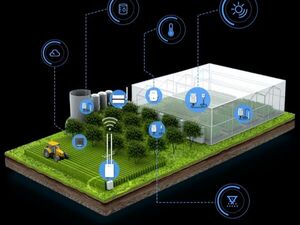
Smart and Sustainable Agriculture System
"With climate change and water scarcity we will monitor farms Temperature, humidity, CO2 emissions. " [...]

OpnBeat, easy to understand, fun to use DIY Lofi sampler
"OpnBeat is Arduino-based open source Lofi sampler. By using voice recorder chip, it is very simple so that you can modify it as you like. OpnBeat is Arduino-based Lofi sampler which is affordable, easy to understand and fun to play! Thanks to its core component the voice recorder chip ISD1700 series, OpnBeat is really simple. There is no complex technology such as mp3 or codec. The simplicity and understandability are useful for anyone who wants to modify it or make original DIY sampler." [...]

Human Breathalyzer to monitor ketosis
"It is a tool to monitor the presence of acetone in our breath. It uses gas sensor MQ-135, 1.3inch OLED display, DHT22 & Arduino Uno. Acetone is a volatile organic compound that is produced as a byproduct of the metabolism of fats in the liver. When the body is in a state of ketosis, such as during fasting, low-carbohydrate diets, or certain medical conditions like diabetes, the production of acetone increases, and it can be detected in the breath. Measuring acetone in breath can provide a non-invasive way to monitor the levels of ketones in the body. This can be useful for people with diabetes who are following a low-carbohydrate or ketogenic diet, as well as for athletes who are trying to optimize their performance by improving their metabolic efficiency." [...]

miniAstroHeat Project powered by Blynk
"minAstroHeat is an automatic 2-Channel dew heater controller for (astro)photography, controlled with an app powered by Blynk 1. Introduction To avoid carrying heavy equipment in and out from my cellar, I needed a way to keep my astrophotography equipment safe and protected from the elements all year round, even during long periods of disuse. While an Arduino-based automatic heating system helped me control dew heaters during photography sessions, it wasn't enough to provide the resilience level of protection I needed. A single sensor or power failure could leave my gear exposed to moisture and ice for days or even weeks without being noticed. That's why I set out to build a more comprehensive solution, based on a ESP32 connected to the cloud and controlled by a smartphone app powered by Blynk. This solution would give me the peace of mind I needed to leave my equipment outside safely and securely." [...]

Autonomous Soil Quality Assessment (AutoSQA)
"This is a write up, containing instructions, demos, experiments and lessons learned, on the AutoSQA project I developed for the NXP Hovergames3. The AutoSQA project, which can be seen as a system, is an autonomous platform for sampling soils in agricultural fields. It uses the NXP MR-Buggy3 as the robotics platform with add sensors to accomplish this task. The autonomous part is handled by the NXP NavQPlus with ROS 2 nodes. The NXP MR-Buggy3 Kit, together with the new NXP NavQPlus and the BOSCH BME688 where part of awarded hardware (discounts) from NXP, as part of the NXP HoverGames3, to accomplish this project. Soil Monitoring: Importance, what and how Agriculture all over the world is facing a difficult and critical challenge with degradation of soil fertility and with that lower crop yields, even with higher fertilization." [...]
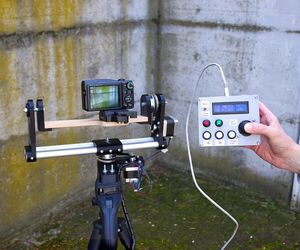
DIY Arduino Camera Robot (Motorized Pan Tilt Head)
"Hello and welcome back to my channel! For the past few months I have been building a motorized system to move the camera when I shoot video footage for the videos that I publish on my channel. The idea behind this project is to shoot footage with a very smooth and stable movement easily and without having to redo it many times, like I used to do when I did camera movements by hand. I had actually already built something similar back in June, that was made of a rotating base on which to put my tripod. The idea worked but the construction had many problems, so I decided to take another approach. Anyway, the whole project started with the idea of moving the camera placed on the tripod using a remote control with a joystick." [...]
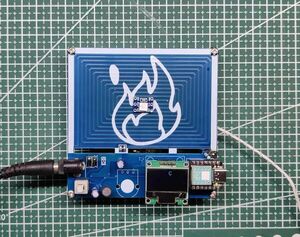
PCB Hotplate Slightly Bigger Edition
"So here's the "PCB Hotplate slightly bigger edition" which is Version 2 of my previously made PCB Hotplate project. The most significant change in this project was the size of the hotplate, which is approximately 99mm x 98mm in total and the heating area, which is approximately 65mm x 98mm. (The previous hotplate was tiny, measuring only 60mm x 90mm in total, with a heating area of only 60mm x 55mm.) The new model is powered by an XIAO M0 DEV Board and features an OLED display that shows the current temperature of the heating coil. XIAO was chosen due to its small size and the ATSAMD21G18 microcontroller, which is an ARM Cortex-M0+ processor. Seeed Studio created it, and it is part of the Seeeduino XIAO family." [...]
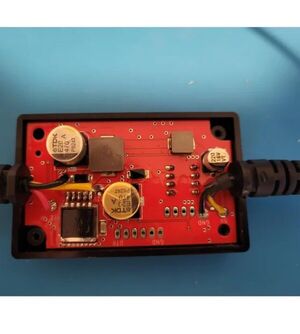
Dash Camera Power Supply With Ultra Low "power Off" Consumption (50uA)
"This power source is intended for Dash cameras permanent power supply. Compared to commercial models, it has 50 to 100 times lower consumption in the off state. I bought a commercial MiVue SmartBox lll, but it is not as smart as it is called. In the "power off mode" when the camera is turned off due to low voltage, it still draws about 3.5 mA from the car battery! In other words, every 12 days it consumes 1 Ah from your car battery. If you add this 3.5 mA to the "normal consumption" of a switched-off "modern car" (which is 2 to 30mA) then, after long-term parking in cold conditions (or if your battery is old) it can cause the car will not start." [...]
Secção Videos
Videos interessantes.
That's all Folks!



